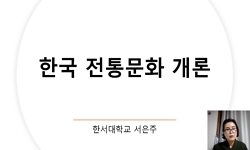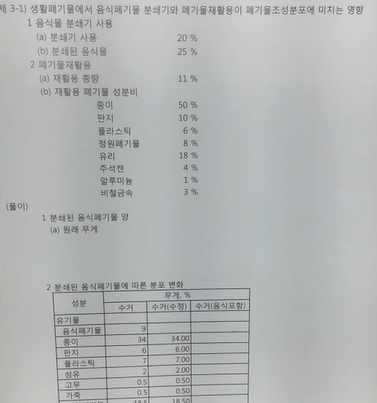The well is one of the ancient water collection facilities and is a relic closely related to the lives of people at the time. In particular, more than 200 wells were discovered through excavation in Gyeongju during the Unified Silla Dynasty, along wit...
http://chineseinput.net/에서 pinyin(병음)방식으로 중국어를 변환할 수 있습니다.
변환된 중국어를 복사하여 사용하시면 됩니다.
- 中文 을 입력하시려면 zhongwen을 입력하시고 space를누르시면됩니다.
- 北京 을 입력하시려면 beijing을 입력하시고 space를 누르시면 됩니다.

경주지역 통일신라시대 우물 폐기 의례의 양상과 성격 = Characteristics of the Ritual for Disposal of Well in the Unified Silla Period in Gyeongju
한글로보기https://www.riss.kr/link?id=A108907240
- 저자
- 발행기관
- 학술지명
- 권호사항
-
발행연도
2023
-
작성언어
Korean
-
주제어
Silla royal place ; Well ; Disposal ; Ritual ; Well ritual ; Rain ritual ; 신라 왕경 ; 우물 ; 폐기 ; 의례 ; 우물 의례 ; 기우제
-
등재정보
KCI등재
-
자료형태
학술저널
-
수록면
161-190(30쪽)
- 제공처
-
0
상세조회 -
0
다운로드
부가정보
다국어 초록 (Multilingual Abstract)
The well can be classified into three types according to the disposal pattern of relics, and it can be seen that there were differences in rituals between wells. Each type can be classified into a method of discarding and burying relics (A1 and A2), a method of burying wells at once (B1 and B2), and a case where the disposal behavior is unclear (C). Next, based on the type of disposal, the characteristics of the model composition were examined through the relics excavated from the well. First of all, it can be seen that the relics excavated from Type A wells have almost similar model composition and quantity. On the other hand, examining animal and plant organisms excavated from the well showed that various animal and plant organisms were identified in the A-type well, while only a single species of cow or horse were identified in the B-type well.
Finally, based on this, the aspect and nature of the well disposal ritual in Wanggyeong, Unified Silla were presented, and the process of the disposal ritual was examined. The well disposal ritual can be largely divided into a ritual (Type A) centered around Wolseong area and a ritual (Type B) outside it. This difference is interpreted as the difference between the performer and the purpose of the performance. The well disposal ritual is basically a ritual performed on a daily basis to thank the water god at the stage of well disposal and to block the connection between the underground and the ground. However, in the Wolseong area, disposal ceremonies were conducted for national rituals such as the rain ritual, marking an unusual and more rigorously regulated disposal ritual with clear procedures.
The well is one of the ancient water collection facilities and is a relic closely related to the lives of people at the time. In particular, more than 200 wells were discovered through excavation in Gyeongju during the Unified Silla Dynasty, along with various traces of rituals. By paying attention to the specificity of these wells, it was intended to clarify the aspect of the disposal ritual, the most representative ritual performed in the well, and to examine the meaning of the well disposal ritual within Silla royal palace.
The well can be classified into three types according to the disposal pattern of relics, and it can be seen that there were differences in rituals between wells. Each type can be classified into a method of discarding and burying relics (A1 and A2), a method of burying wells at once (B1 and B2), and a case where the disposal behavior is unclear (C). Next, based on the type of disposal, the characteristics of the model composition were examined through the relics excavated from the well. First of all, it can be seen that the relics excavated from Type A wells have almost similar model composition and quantity. On the other hand, examining animal and plant organisms excavated from the well showed that various animal and plant organisms were identified in the A-type well, while only a single species of cow or horse were identified in the B-type well.
Finally, based on this, the aspect and nature of the well disposal ritual in Wanggyeong, Unified Silla were presented, and the process of the disposal ritual was examined. The well disposal ritual can be largely divided into a ritual (Type A) centered around Wolseong area and a ritual (Type B) outside it. This difference is interpreted as the difference between the performer and the purpose of the performance. The well disposal ritual is basically a ritual performed on a daily basis to thank the water god at the stage of well disposal and to block the connection between the underground and the ground. However, in the Wolseong area, disposal ceremonies were conducted for national rituals such as the rain ritual, marking an unusual and more rigorously regulated disposal ritual with clear procedures.
국문 초록 (Abstract)
우물은 유물의 폐기 양상에 따라 크게 3가지 유형으로 구분할 수 있으며, 이러한 폐기 양상의 차이는 우물 사이에도 의례에 차이가 있었음을 알 수 있었다. 각 유형은 유물의 폐기 방식에 따라 유물을 폐기하고 매몰하는 방식(A1·A2), 우물을 한 번에 매몰하는 방식(B1·B2), 폐기 행위가 불분명한 경우(C)로 분류할 수 있다. 다음으로 폐기 유형을 바탕으로 우물의 출토 유물을 통해 기종 구성의 특징을 살펴보았다. 우선 A 유형 우물에서 출토된 유물은 거의 유사한 기종 구성과 출토 수량을 가지고 있음을 확인할 수 있다. 한편 우물에서 출토된 동·식물 유기체를 살펴본 결과 A 유형 우물의 경우 다종다양한 동·식물 유기체가 확인된 반면, B 유형은 소나 말 단일 종만이 확인된다는 것을 알 수 있었다.
마지막으로 이를 바탕으로 통일신라 왕경 내 우물 폐기 의례의 양상과 성격을 제시하고, 폐기 의례의 과정을 살펴보고자 하였다. 우물 폐기 의례는 크게 월성 일대를 중심으로 이루어진 의례(A 유형)와 그 외부에서 이루어진 의례(B 유형)로 나눌 수 있다. 이러한 차이는 행자와 연행 목적의 차이로 해석된다. 우물의 폐기 의례는 기본적으로 우물 폐기 단계에서 수신(水神)인 용왕에게 감사드리고, 지하와 지상의 연결을 차단하기 위해 일상적으로 행해지는 의례이다. 그러나 월성 일대에서는 기우제와 같은 국가의례를 목적으로 폐기 의례를 연행하였으며, 이는 비일상적이며 보다 강한 규범과 명확한 절차가 존재하는 폐기 의례라 할 수 있다.
우물은 고대의 집수시설 중 하나로서, 당시 사람들의 삶과 밀접한 관련을 지닌 유구이다. 특히 통일신라시대 경주지역에서는 발굴을 통해 약 400기의 우물이 발굴되었으며, 그와 함께 다종다...
우물은 고대의 집수시설 중 하나로서, 당시 사람들의 삶과 밀접한 관련을 지닌 유구이다. 특히 통일신라시대 경주지역에서는 발굴을 통해 약 400기의 우물이 발굴되었으며, 그와 함께 다종다양한 의례의 흔적 역시 확인되었다. 는 이러한 우물의 특수성에 주목하여, 우물에서 행해진 가장 대표적인 의례인 폐기 의례의 양상을 밝히고, 우물 폐기 의례가 왕경 내에서 가지는 의미를 살펴보고자 하였다.
우물은 유물의 폐기 양상에 따라 크게 3가지 유형으로 구분할 수 있으며, 이러한 폐기 양상의 차이는 우물 사이에도 의례에 차이가 있었음을 알 수 있었다. 각 유형은 유물의 폐기 방식에 따라 유물을 폐기하고 매몰하는 방식(A1·A2), 우물을 한 번에 매몰하는 방식(B1·B2), 폐기 행위가 불분명한 경우(C)로 분류할 수 있다. 다음으로 폐기 유형을 바탕으로 우물의 출토 유물을 통해 기종 구성의 특징을 살펴보았다. 우선 A 유형 우물에서 출토된 유물은 거의 유사한 기종 구성과 출토 수량을 가지고 있음을 확인할 수 있다. 한편 우물에서 출토된 동·식물 유기체를 살펴본 결과 A 유형 우물의 경우 다종다양한 동·식물 유기체가 확인된 반면, B 유형은 소나 말 단일 종만이 확인된다는 것을 알 수 있었다.
마지막으로 이를 바탕으로 통일신라 왕경 내 우물 폐기 의례의 양상과 성격을 제시하고, 폐기 의례의 과정을 살펴보고자 하였다. 우물 폐기 의례는 크게 월성 일대를 중심으로 이루어진 의례(A 유형)와 그 외부에서 이루어진 의례(B 유형)로 나눌 수 있다. 이러한 차이는 행자와 연행 목적의 차이로 해석된다. 우물의 폐기 의례는 기본적으로 우물 폐기 단계에서 수신(水神)인 용왕에게 감사드리고, 지하와 지상의 연결을 차단하기 위해 일상적으로 행해지는 의례이다. 그러나 월성 일대에서는 기우제와 같은 국가의례를 목적으로 폐기 의례를 연행하였으며, 이는 비일상적이며 보다 강한 규범과 명확한 절차가 존재하는 폐기 의례라 할 수 있다.
참고문헌 (Reference)
1 篠原豊一, "奈良市埋蔵文化財調査センター紀要" 奈良市教育委員会 1990
2 문다솔, "통일신라시대 경주지역 우물 연구" 영남고고학회 (92) : 149-183, 2022
3 김재홍, "창녕 화왕산성 龍池 출토 木簡과 祭儀" 한국목간학회 4 : 2009
4 아오키 타카키 ; 오택현, "일본 고대 도성 조영의 진제(鎮祭)와 수변(水邊) 제사" 한국목간학회 (20) : 209-254, 2018
5 권태효, "우물의 공간적 성격과 상징성 연구" 민족문화연구원 (56) : 253-292, 2012
6 국립경주박물관, "우물에 빠진 통일신라 동물들" 2011
7 이필영, "우물신앙의 본질과 전개 양상 -민속학 자료를 중심으로-" 한국역사민속학회 (26) : 247-288, 2008
8 한영화, "신라의 희생제의" 수선사학회 (66) : 137-164, 2018
9 권오영, "신라우물" 민속원 2015
10 김수민, "신라고분에 보이는 음식공헌과 生死觀" 경주사학회 38 (38): 31-60, 2013
1 篠原豊一, "奈良市埋蔵文化財調査センター紀要" 奈良市教育委員会 1990
2 문다솔, "통일신라시대 경주지역 우물 연구" 영남고고학회 (92) : 149-183, 2022
3 김재홍, "창녕 화왕산성 龍池 출토 木簡과 祭儀" 한국목간학회 4 : 2009
4 아오키 타카키 ; 오택현, "일본 고대 도성 조영의 진제(鎮祭)와 수변(水邊) 제사" 한국목간학회 (20) : 209-254, 2018
5 권태효, "우물의 공간적 성격과 상징성 연구" 민족문화연구원 (56) : 253-292, 2012
6 국립경주박물관, "우물에 빠진 통일신라 동물들" 2011
7 이필영, "우물신앙의 본질과 전개 양상 -민속학 자료를 중심으로-" 한국역사민속학회 (26) : 247-288, 2008
8 한영화, "신라의 희생제의" 수선사학회 (66) : 137-164, 2018
9 권오영, "신라우물" 민속원 2015
10 김수민, "신라고분에 보이는 음식공헌과 生死觀" 경주사학회 38 (38): 31-60, 2013
11 김민정, "신라 왕경 우물의 제의 연구" 성균관대학교 대학원 2013
12 심현철, "신라 왕경 도성공간의 경관과 매장의례" 한국상고사학회 2019
13 차순철, "신라 도성 내 의례공간과 변화 -하천 및 분묘제사와 호마를 중심으로-" 한국고대학회 (39) : 231-263, 2013
14 황인호, "신라 도성 내 국가제의 공간 연구 -경주 나정 유적을 중심으로-" 신라사학회 (56) : 79-109, 2022
15 김명자, "세시풍속을 통해본 물의 종교적 기능" 한국민속학회 49 : 157-182, 2009
16 권오영, "성스러운 우물의 제사 - 풍납토성 경당지구 206호 유구의 성격을 중심으로 -" 역사문화학회 11 : 2008
17 전덕재, "삼국과 통일신라시대 가뭄 발생 현황과 정부의 대책" 한국사연구회 (160) : 1-46, 2013
18 김재호, "산간농촌 수리(水利)관행을 통해 본 물에 대한 인식" 한국민속학회 44 : 99-132, 2006
19 정수옥, "백제 한성기 국가의례와 의례용기 그리고 음식의 공헌 -풍납토성 출토 유물을 중심으로-" 백제문화연구소 (63) : 5-30, 2020
20 김광언, "동아시아의 우물" 민속사 2017
21 우승하 ; 오명환 ; 김희승, "달골 ‘물당기기’ 의례(儀禮)구조를 통해 본 ‘물’의 관념" 역사문화학회 24 (24): 51-73, 2021
22 임근혜, "근대화 이후 우물제사의 전승 원동력-안성 공도 지역의 사례를 중심으로-" 역사문화학회 20 (20): 225-261, 2017
23 대한문화유산연구센터, "고대 동북아시아의 水利와 祭祀" 학연문화사 2011
24 김현희, "統一新羅 王京 우물 硏究" 경북대학교 대학원 2015
25 奈良縣立橿原考古學硏究所附屬博物館, "水と祭祀の考古學" 學生社 2005
26 국립경주박물관, "國立慶州博物館內 우물 出土 動物遺體" 2011
27 鍾方正樹, "井戸の考古學" 同成社 2003
28 山本 博, "井戸の硏究" 1970
29 김창억, "三國時代 時至聚落의 展開過程과 性格" 嶺南考古學會 27 : 2000
30 한영화, "8세기 신라의 재이 양상과성덕왕대 전사서의 설치" 고려사학회 (89) : 297-322, 2022
동일학술지(권/호) 다른 논문
-
- 부산고고학회
- 배진성
- 2023
- KCI등재
-
- 부산고고학회
- 정대봉
- 2023
- KCI등재
-
- 부산고고학회
- 후지타 겐지
- 2023
- KCI등재
-
- 부산고고학회
- 김현식
- 2023
- KCI등재




 KCI
KCI 스콜라
스콜라






